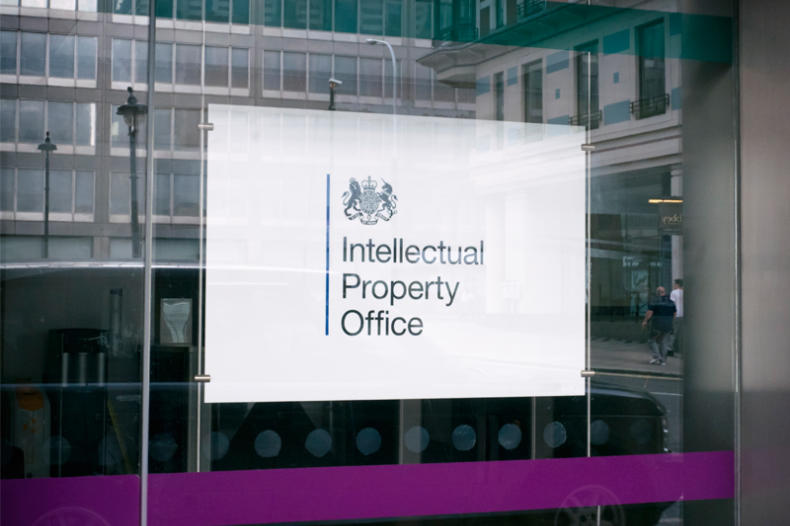Table of Contents
Introduction
The UK Intellectual Property Office (UK IPO) is an important organization for managing intellectual property in the United Kingdom. It is the official government body in charge of trademark registration, as well as patents, designs, and copyright administration. The UK IPO’s main job is to review and approve trademarks, which are unique signs that distinguish one trader’s goods or services from another, providing legal protection against misuse.
For businesses, trademark registration is extremely valuable. It is a crucial step in protecting brand identity and granting exclusive rights to use a mark for specific goods or services. Getting a registered trademark strengthens a company’s position in the market, discouraging competitors from using similar signs that could confuse customers and weaken the brand.
This article serves as a comprehensive guide on navigating the procedures and requirements set by the UK IPO for successful trademark registration. We will go through each stage of the process and provide essential tips and insights to help you understand what it takes to secure your trademark registration successfully.
Understanding Trademarks and Intellectual Property Rights
Trademarks are distinctive signs or symbols that businesses use to identify their products or services from those of other entities. A trademark can include names, logos, slogans, and even unique packaging features. These marks act as valuable assets for a business by building brand recognition and customer loyalty, thereby giving a competitive edge in the marketplace.
The concept of intellectual property rights is pivotal in protecting these trademarks. By legally recognizing the ownership of a creation, intellectual property rights prevent unauthorized use of the trademark, ensuring that the original owner reaps the benefits of their investment and creativity.
The UK Intellectual Property Office (UK IPO) plays a critical role in this landscape by:
- Registering Trademarks: The UK IPO provides a system for businesses to register their trademarks, granting exclusive rights to use them within the UK.
- Legal Protection: It offers legal protection against infringement, which includes unauthorized use of similar or identical marks.
- Maintaining Records: The office maintains comprehensive records of all registered trademarks, which are crucial for enforcing rights.
Registering with the UK IPO not only legitimizes a brand’s identity but also fortifies its legal standing against potential infringement. This proactive step is essential for any business looking to secure its brand assets comprehensively.
Key Responsibilities of the UK Intellectual Property Office
The UK Intellectual Property Office (UK IPO) serves as the official government body responsible for intellectual property rights in the United Kingdom, including the registration and protection of trade marks, patents, and designs. The UK IPO ensures that intellectual property is recognized and protected under the law, which in turn fosters innovation and creativity in the business community.
Trade Marks
- Registration: The UK IPO manages the entire process of trade mark registration—from application to issuance. It provides a public register where all trade marks are recorded.
- Examination: Each application undergoes a rigorous examination to ensure it meets legal requirements and doesn’t conflict with existing trademarks.
- Oppositions: The UK IPO also oversees the opposition process, where third parties can contest a trade mark application before it is granted.
Patents
- Filing and Examination: Inventors submit their patent applications through the UK IPO, which then examines applications for novelty, inventiveness, and industrial applicability.
- Granting Patents: Upon successful examination, the UK IPO grants patents that confer exclusive rights to inventors for their creations.
Designs
- Protection of Designs: Designers can register their designs with the UK IPO to protect their visual appearance or aspects of products.
- Publication and Enforcement: The registered designs are published and legally enforceable, deterring infringement and unauthorized use.
The functions carried out by the UK IPO in relation to trademarks specifically include:
- Assessing each trademark application’s distinctiveness and potential to be deceptive or cause confusion among consumers.
- Managing objections from examiners or oppositions from existing trademark owners during the application process.
- Maintaining detailed records of all registered trademarks which are accessible to the public for searches and due diligence.
By fulfilling these responsibilities, the UK IPO plays a critical role in protecting businesses’ investment in brand identity and consumer trust. It is instrumental in preventing market confusion by ensuring that each registered trademark is unique and does not infringe on prior rights. Through its comprehensive registry services, it also supports businesses in enforcing their rights against counterfeiters or trademark infringers.
With this understanding of the remit of the UK IPO regarding trade marks as well as other intellectual property forms such as patents and designs, we move forward to examining how businesses can navigate this landscape when applying for trademark registration.
Navigating the Trademark Registration Process at the UK IPO
- Preparing Your Trademark Application
Successful trademark registration with the UK Intellectual Property Office (UK IPO) begins with a meticulously prepared application. The process demands a clear understanding of what constitutes a strong trademark and awareness of the specific criteria set by the UK IPO.
Key Aspects of a Strong Trademark Application:
- Distinctiveness: A robust trademark needs to be distinctive enough to be associated with your specific goods or services, distinguishing them from those of other businesses.
- Non-descriptiveness: It’s essential that the mark is not merely descriptive of the goods or services it represents. Avoid generic terms that are broadly used within your industry.
- No Conflicts: Before submission, ensure that your proposed mark does not infringe on existing trademarks. This can be verified through a comprehensive search in the UK IPO’s trademark database.
To ensure you meet these requirements, consider these best practices:
- Conduct Thorough Research: Utilize the UK IPO’s search tool to check for any similar or identical trademarks that could cause conflict.
- Evaluate Trademark Qualities: Assess whether your mark is inherently distinctive or has acquired distinctiveness through use.
- Prepare a Clear Representation: Submit a high-quality image of your mark where applicable, ensuring it is well-defined and suitable for reproduction in the trademark journal.
- List Specific Goods and Services: Clearly identify and categorize all goods and services you wish to protect with your trademark. Use precise terminology that aligns with the standardized classification system.
Further Tips for Preparing Your Application:
- Seek Professional Advice: Engage with trademark experts who can help navigate complex cases, such as figurative marks or those involving non-traditional signs like sounds or smells.
For example, if your brand uses a unique jingle, evidence of its distinctiveness and prior use might enhance its registrability.
- Anticipate Objections: Be prepared to respond to potential objections from the UK IPO examiner by providing substantive arguments or amending your application accordingly.
Documentation Requirements:
Ensure you have all necessary documentation ready:
- Details of the applicant (name, address, etc.)
- A clear representation of the trademark
- List of classes and terms under which you seek protection
- Declaration of intent to use the trademark
By following these guidelines and meticulously preparing each component of your application, you significantly increase your chances of approval during the initial stages of examination by the UK IPO.
Submitting Your Trademark Application to the UK IPO
When it’s time to submit your trademark application, the UK Intellectual Property Office (UK IPO) offers two primary methods: online and postal. Each channel has its own set of benefits and potential drawbacks, and choosing the right one depends on your specific circumstances.
Online Application
- Ease of Use: Filing your application online is generally quicker and more user-friendly. The UK IPO website guides you through each step of the application process.
- Cost-Effectiveness: Online applications typically incur lower fees than postal submissions.
- Immediate Acknowledgment: You receive instant confirmation of your submission, which is not possible with postal applications.
- Accessibility: The system is accessible 24/7, allowing you to submit your application at any time that suits you.
However, online applications may not be suitable for everyone. If you’re filing a complex application, such as one with non-standard characters or images that can’t be easily uploaded, you may need to consider alternative methods.
Postal Application
- Tactile Submissions: For those who prefer or require physical representations of their marks, such as samples of packaging or labels, postal applications are the appropriate choice.
- Complex Applications: In cases where an online application isn’t feasible due to its complexity, the postal method provides a solution.
The primary drawbacks of postal applications include:
- Longer Processing Times: It takes longer for postal applications to reach the UK IPO and be processed.
- Higher Fees: Postal applications come with higher fees compared to their online counterparts.
- No Instant Confirmation: Unlike online submissions, you won’t receive immediate acknowledgment of your application; there is a waiting period until you are notified by post.
Regardless of which method you choose for submitting your trademark application, ensure that all required documents and information are accurately provided to avoid delays in processing your application. Additionally, keep a copy of your submission records for future reference or in case any issues arise during the examination process.
By evaluating both options carefully and selecting the one that best aligns with your needs, you can efficiently navigate this stage of the trademark registration process at the UK IPO.
- Behind the Scenes: The UK IPO’s Review and Examination Process
Once you submit your trademark application to the UK Intellectual Property Office, it goes through a crucial stage called the review and examination process. This stage is essential in determining whether your trademark will be accepted for registration, and it involves several key steps:
Initial Examination
- The UK IPO’s examiners start by conducting an initial examination of your application.
- They check for compliance with formal requirements and search existing trademarks to ensure your mark is distinctive enough and not confusingly similar to those already registered.
Search Report
- If any potential conflicts are identified, the UK IPO issues a search report.
- Applicants receive details of earlier trademarks that are identical or similar to their own, allowing for a response or modifications if necessary.
Publication in the Trade Marks Journal
- Following a successful initial review, the trademark application is published in the Trade Marks Journal.
- This publication serves as an invitation for any third parties to view your proposed trademark.
Opposition Period
- There is a period of two months after publication, which can be extended by one month upon request, where third parties can oppose the registration.
- Oppositions can arise if someone believes that your trademark infringes on their rights or if it is not sufficiently distinctive.
Dealing with Oppositions
- When faced with opposition, you have an opportunity to respond with counterstatements.
- Some cases may lead to a hearing before a decision is made by the UK IPO.
Trademark Registration Process at the UK IPO
A comprehensive step-by-step guide on successfully navigating each stage of the trademark registration process at the UK IPO includes understanding how meticulous the review process is, preparing for potential publication hurdles, and being ready to tackle any oppositions head-on.
By gaining insights into these procedures, applicants can anticipate possible challenges and take proactive steps. For instance, prior to submission, conducting a thorough search of existing trademarks could highlight any likely conflicts. Additionally, understanding common grounds for opposition allows applicants to fortify their applications against such claims.
Transitioning into subsequent phases requires vigilance and preparedness. Should your application clear all hurdles without opposition, it progresses towards formal registration — another important milestone in securing your brand’s identity.
- From Application to Registration: Understanding Trademark Granting at the UK IPO
At the heart of the trademark registration process, the UK IPO stands as the decisive authority in granting a trademark. Once you have navigated through the application submission and examination phases, reaching this final stage marks a significant milestone for your brand’s protection. Here is what to expect as your application transitions from review to registration:
Step-by-Step Overview of Granting Process:
- Notice of Acceptance: After a rigorous examination, if the UK IPO deems your trademark application successful, you will receive a ‘Notice of Acceptance’. This document signifies that your mark meets all legal requirements and is poised for publication.
- Publication in the Trade Marks Journal: Your accepted trademark is then published in the UK IPO’s online Trade Marks Journal. This publication serves as an open invitation for any oppositions to be filed by third parties who may have concerns about your proposed mark.
- Opposition Period: A period of two months (extendable to three) follows publication during which interested parties can oppose your application. Should this occur, you will be notified and given the opportunity to counter-oppose.
- No Opposition or Successful Counter-Opposition: If no oppositions are filed or if any raised objections are resolved in your favor, your trademark moves forward to registration.
- Registration Certificate Issued: The UK IPO issues an official registration certificate, sealing the deal on your mark’s protected status within the UK.
- Trademark Protection Commences: Congratulations! With the certificate in hand, you now hold exclusive rights to use your trademark within the relevant commercial spheres.
Typical Timeframe:
The entire process from trademark application submission to granting can take approximately 4-6 months, barring any complications such as oppositions or requests for additional information.
As you reach this pivotal phase, it’s essential to maintain vigilance and ensure all communications from the UK IPO are addressed promptly and thoroughly. The path from application to registration demands precision and attention to detail.
With your trademark officially granted by the UK IPO, you secure not only legal recognition but also solidify your business’s brand identity in the marketplace. The next steps involve maintaining that registered status and understanding how this domestic protection aligns with potential international expansion ambitions.
The Role of Trademark Experts in Ensuring a Smooth Journey at the UK IPO
Navigating the intricacies of the UK Intellectual Property Office for trademark registration is a task that often involves complex legal and procedural knowledge. Trademark experts play a pivotal role by offering their specialized expertise to simplify this process for businesses and individuals alike. Their understanding of the nuances within the UK IPO’s framework ensures that each application is tailored to meet specific criteria, thus enhancing the likelihood of a successful registration.
Benefits of Engaging Trademark Experts:
- Strategic Guidance: They provide insightful advice on how to position your trademark for approval, considering similar existing marks and industry-specific practices.
- Error Mitigation: Professionals adept in trademark law help avoid common pitfalls that can lead to application delays or rejections.
- Time Efficiency: With their assistance, the application process can be more streamlined, potentially reducing the time taken from submission to registration.
Maximizing Success with Reputable Experts:
To ensure a favorable outcome, it’s advisable to engage services from a reputable trademark expert or firm. These entities come equipped with:
- A history of successful trademark registrations.
- Testimonials or case studies showcasing their expertise.
- A transparent approach to communicating potential challenges and realistic outcomes.
By choosing seasoned professionals who are well-acquainted with the workings of the UK IPO, applicants significantly bolster their chances of trademark approval while benefiting from a less stressful registration experience.
As businesses consider protecting their brand identity not just in the UK but on an international stage, understanding the territorial limitations of trademark rights becomes crucial.
Considering International Expansion: Strategies for Global Trademark Protection
Businesses with a vision for international growth must understand the scope of UK trademark registration. The protections conferred are robust but geographically restricted to the United Kingdom and Isle of Man, leaving brands vulnerable outside these jurisdictions. Here lies the critical need for a strategic approach towards international trademark protection.
Territorial Limitations of UK Trademark Registration:
- Exclusive rights within the UK and Isle of Man only.
- No automatic protection for your brand in other countries.
International Trademark Registration:
- Consider using the Madrid Protocol, an international treaty simplifying the process to register trademarks in multiple member countries through one application.
- Evaluate major markets for your business and prioritize those regions for trademark registration.
- Bear in mind different countries have varying legal frameworks and requirements for trademark protection.
For companies considering expansion, assessing the landscape of international trademark registration is essential. This not only safeguards brand identity but also fortifies a company’s legal position against potential infringements globally.
By acknowledging these considerations, businesses can formulate a comprehensive strategy that encapsulates both national interests within the UK and broader commercial ambitions on the global stage.
Exploring Additional Resources Offered by the UK IPO Website
The UK IPO website is a valuable resource for anyone going through the trademark registration process. It offers a wide range of features to help applicants at every stage. One particularly useful tool is the online trademark search, which allows users to check if their proposed mark is similar to any existing trademarks. This is important to avoid potential conflicts in the future.
Here are some other services available on the UK IPO website:
- Detailed guidance on each phase of the trademark application process.
- Access to forms and fees for trademark registration.
- Educational material explaining intellectual property basics and how to manage rights.
Understanding Company Formation and Intellectual Property
One feature that stands out is the support provided for setting up a limited company structure. For new businesses, it’s crucial to align company formation with intellectual property strategy from the start. The UK IPO website offers resources that explain this connection, helping entrepreneurs establish a strong foundation for both their business and brand protection.
By using these online tools, applicants can navigate the complexities of trademark registration more confidently and accurately.
Conclusion
Successful trademark registration is a cornerstone of brand protection, and the UK Intellectual Property Office (UK IPO) plays a pivotal role in this process. Diligence is paramount when navigating trademark registration; missteps can lead to delays or rejection. To mitigate risks:
- Seek Expertise: Engage with trademark experts or consult specialized firms for guidance. Their experience can be invaluable, helping to streamline the process and increase the likelihood of a favorable outcome.
- Use Online Resources: The UK IPO website offers an array of tools designed to assist applicants. Utilize the online trademark search tool for preliminary checks and leverage guidance materials that cover various aspects of intellectual property management.
The UK IPO is instrumental in upholding intellectual property rights, providing a structured framework for businesses to secure their trademarks effectively. By adhering to best practices and harnessing available resources and professional assistance, companies can fortify their brand identity and navigate the trademark registration journey with confidence.









